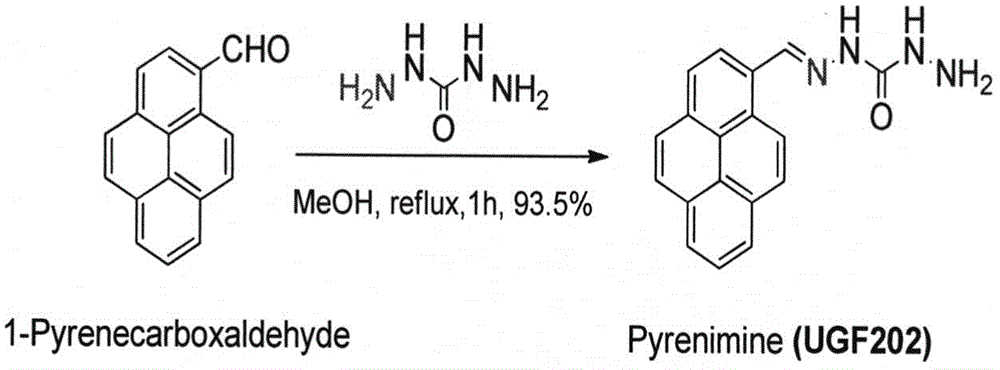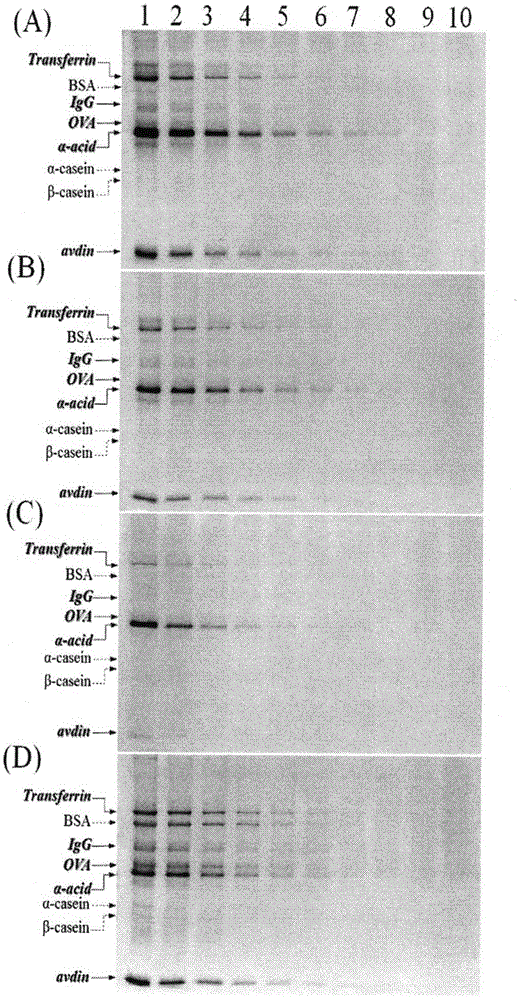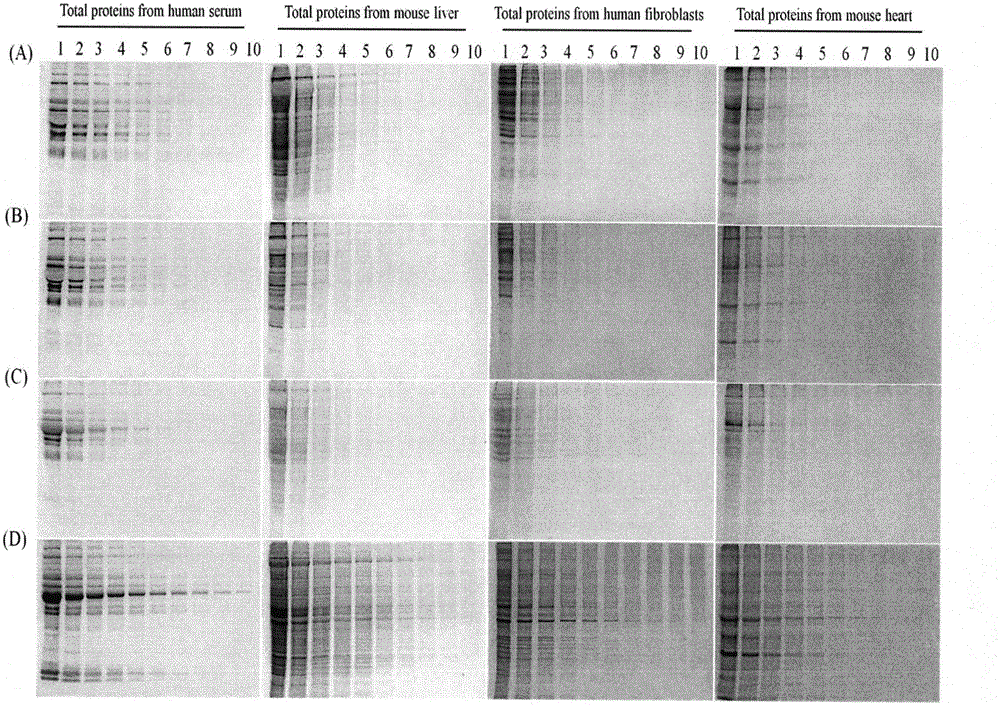Application of 1-pyrenyl-carbohydrazide in specific detection of glycoproteins
A glycoprotein-specific technology, applied in the field of glycoprotein-specific fluorescence detection, can solve the problems of unrealistic economic benefits and experiments, unfavorable research and development of glycoproteomics, high cost, etc., and achieve low cost and simple operation Rapid, less environmental pollution effect
- Summary
- Abstract
- Description
- Claims
- Application Information
AI Technical Summary
Problems solved by technology
Method used
Image
Examples
Embodiment 1
[0028] Example 1 UGF202 glycoprotein-specific fluorescent staining
[0029] figure 1 is the chemical structural formula of 1-pyrenylcarbohydrazide.
[0030] The UGF202 glycoprotein fluorescent staining method is carried out as follows:
[0031] 1) Fix the protein sample gel after SDS-PAGE electrophoresis in 50% methanol and 5% acetic acid aqueous solution for 30min, discard the fixative;
[0032] 2) Oxidation in a periodic acid solution for 20 minutes, wherein the periodic acid solution is an aqueous solution containing 0.5% periodic acid by weight and volume and 3% by volume acetic acid. Then wash once with 0.8% vitamin C aqueous solution by weight to volume for 5 minutes;
[0033] 3) adding dyeing solution for dyeing for 20 minutes, wherein the dyeing solution is UGF202 containing 0.0001% by volume ratio of UGF202 and 5% by volume of DMF and 40% ethanol solution;
[0034] 4) Detection, the stained protein can be observed under a laser scanner.
[0035] Derivatives such ...
experiment example 1U
[0036] Experimental example 1 Comparison of the detection effect of UGF202 glycoprotein fluorescent staining method and other staining methods on standard protein.
[0037] (A) UGF202 glycoprotein fluorescent staining method, (B) Pro-Q Emerald 300 glycoprotein fluorescent staining method, (C) Pro-Q Emerald 488 glycoprotein fluorescent staining method, (D) SYPRO Ruby whole protein fluorescent staining method. Both the Pro-Q Emerald glycoprotein fluorescent staining method and the SYPRO Ruby whole protein fluorescent staining method were described in the literature; 8 different standard proteins from Sigma were used as samples. Band 1, 250ng; Band 2, 125ng; Band 3, 64ng; Band 4, 32ng; Band 5, 16ng; Band 6, 8ng; Band 7, 4ng; Band 8, 2ng; Band 9, 1ng; Band 10, 0.5ng . The result is as figure 2 As shown, the detection sensitivity of UGF202 glycoprotein fluorescent staining method is slightly better than that of Pro-Q Emerald 300 glycoprotein fluorescent staining method, and is 8...
experiment example 2
[0038]Experimental example 2 Comparison of the detection effect of UGF202 glycoprotein fluorescent staining method and other staining methods on different samples.
[0039] (A) UGF202 glycoprotein fluorescent staining method, (B) Pro-Q Emerald 300 glycoprotein fluorescent staining method, (C) Pro-Q Emerald4 88 glycoprotein fluorescent staining method, (D) SYPRO Ruby whole protein fluorescent staining method, all Operate as documented. The four samples used are: total protein extracted from human serum, total protein extracted from human fibroblasts, total protein extracted from mouse liver tissue, and total protein extracted from mouse myocardium. Among them, the extracted human serum total protein is used as the sample, and the loading amount is: band 1,500ng; band 2,250ng; band 3,125ng; band 4,64ng; band 5,32ng; band 6,16ng; band 7, 8ng; belt 8, 4ng; belt 9, 2ng; belt 10, 1ng. The result is as image 3 As shown, the detection sensitivity of UGF202 glycoprotein fluorescent...
PUM
 Login to View More
Login to View More Abstract
Description
Claims
Application Information
 Login to View More
Login to View More - R&D
- Intellectual Property
- Life Sciences
- Materials
- Tech Scout
- Unparalleled Data Quality
- Higher Quality Content
- 60% Fewer Hallucinations
Browse by: Latest US Patents, China's latest patents, Technical Efficacy Thesaurus, Application Domain, Technology Topic, Popular Technical Reports.
© 2025 PatSnap. All rights reserved.Legal|Privacy policy|Modern Slavery Act Transparency Statement|Sitemap|About US| Contact US: help@patsnap.com



